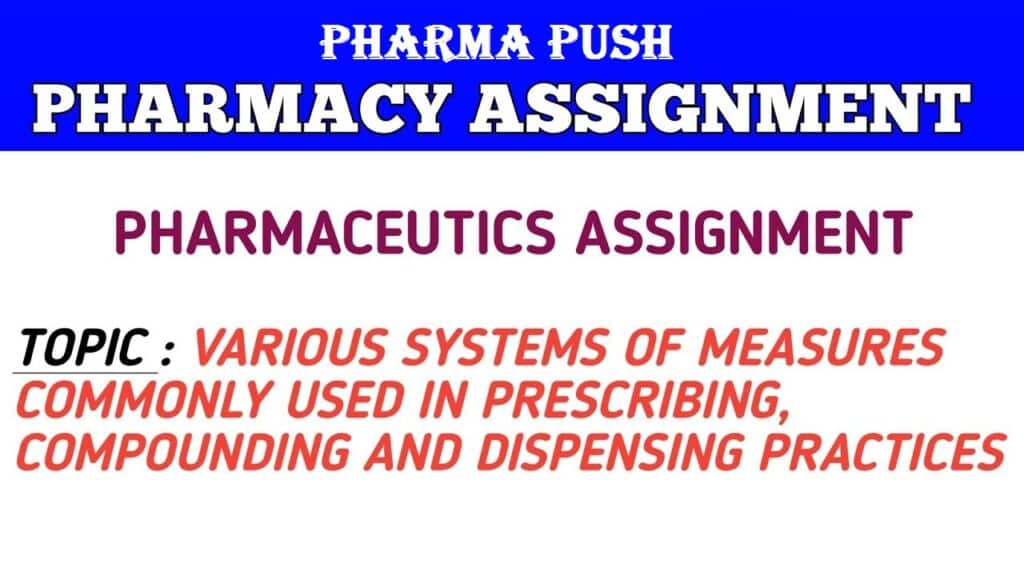Market preparations refer to pharmaceutical products that are formulated and packaged for commercial distribution. Fixed Dose Combinations (FDCs) involve combining two or more active ingredients in a single dosage form. Here are examples of different types of dosage forms and some FDCs with their generic names and three brand names each:
Tablets
Tablets are a popular and common form of pharmaceutical dosage. They are solid, flat or biconvex, and they come in a variety of shapes and sizes. Tablets are designed to be easily swallowed and are a convenient way to administer a precise dose of a medication. The tablet form is widely used for both over-the-counter and prescription drugs.
Here are some key features of tablets:
- Composition: Tablets are composed of active pharmaceutical ingredients (APIs) along with various excipients. Excipients are non-active substances added to the formulation to aid in the manufacturing process, improve stability, enhance absorption, or add other desirable properties.
- Dosage Forms:
- Immediate Release (IR) Tablets: Release the medication quickly, allowing for rapid absorption.
- Extended Release (ER) or Prolonged Release Tablets: Release the medication gradually over an extended period, providing a sustained effect and often requiring less frequent dosing.
- Coating: Some tablets may have a coating to make them easier to swallow, mask the taste, protect the drug from environmental factors, or control the release of the drug.
- Disintegration: Tablets are designed to disintegrate in the digestive system, allowing the drug to be absorbed.
- Advantages:
- Convenient and easy to use.
- Accurate dosing.
- Stability and long shelf life.
- Types: Tablets can be oral (taken by mouth), sublingual (dissolved under the tongue), or buccal (placed between the cheek and gum).
- Examples: Common examples of tablets include pain relievers (e.g., acetaminophen), antibiotics (e.g., amoxicillin), and cardiovascular medications (e.g., aspirin).
You May Like: Various systems of measures commonly used in prescribing, compounding and dispensing practices
Tablets are one of the most widely prescribed and used dosage forms due to their convenience, accuracy in dosing, and versatility in delivering a wide range of medications.
Join Telegram- Generic Name: Amlodipine + Atorvastatin
- Brand Names:
- Caduet
- Amlovas-AT
- Atorfit-CV
Capsules
Capsules are another common pharmaceutical dosage form, similar to tablets, but with some key differences. Capsules consist of a gelatin or other suitable material shell that encloses a dosage of medication. The medication inside the capsule can be in the form of a powder, granules, or sometimes liquid. Capsules are designed to be swallowed whole, and they provide an alternative to tablets for delivering medications.
Here are some key features of capsules:
- Shell Composition: The outer shell of capsules is typically made of gelatin, which is derived from animal sources. However, vegetarian capsules made from alternative materials like cellulose are also available.
- Dosage Forms:
- Hard Gelatin Capsules: These are the most common type and consist of two pieces that fit together. They are often used for dry or powdered formulations.
- Soft Gelatin Capsules: These contain a liquid or semi-solid formulation and have a flexible, gel-like outer shell.
- Advantages:
- Easier to swallow for some individuals compared to tablets.
- Can mask the taste of certain medications.
- Useful for delivering drugs that are sensitive to light or oxygen.
- Disintegration: Capsules typically dissolve or disintegrate in the digestive system, allowing the medication to be released.
- Coating: Some capsules may have an additional coating for various reasons, such as taste masking or delayed release.
- Types: Capsules can be used for immediate-release or extended-release formulations, similar to tablets.
- Examples: Common examples of medications available in capsule form include antibiotics (e.g., amoxicillin capsules), vitamins (e.g., vitamin E capsules), and over-the-counter pain relievers (e.g., ibuprofen capsules).
Capsules offer versatility in terms of the types of medications that can be formulated within them, and they are often chosen based on patient preferences and the specific requirements of the drug being administered. As with tablets, it’s important to follow healthcare professionals’ advice on how to take capsules for optimal therapeutic effects.
- Generic Name: Omeprazole + Domperidone
- Brand Names:
- Domstal-OD
- Ocid-DSR
- Praz-D
Liquid Syrups
Liquid syrups are a pharmaceutical dosage form in which medications are dissolved or suspended in a sweetened and flavored liquid. These formulations are designed to be easily administered, especially for individuals who may have difficulty swallowing solid dosage forms like tablets or capsules, such as children or elderly patients. Liquid syrups are commonly used for both over-the-counter and prescription medications.
Here are some key features of liquid syrups:
- Composition: Liquid syrups consist of an active pharmaceutical ingredient (API), sweeteners, flavorings, water, and other excipients. The sweeteners and flavorings are added to improve taste and make the medication more palatable.
- Dosage Forms:
- Solutions: Medications are completely dissolved in the liquid.
- Suspensions: Particles of the medication are suspended in the liquid, and the suspension needs to be shaken before use.
- Advantages:
- Easy to swallow, making them suitable for children and individuals with difficulty swallowing solid forms.
- Allow for precise dosing, especially in pediatrics where dosages need to be adjusted based on body weight.
- The sweetened and flavored nature improves patient acceptance.
- Disintegration: Since liquid syrups are already in a liquid form, there is no disintegration process necessary. The medication is readily available for absorption.
- Packaging: Liquid syrups are typically packaged in bottles with a measuring device (e.g., oral syringe or cup) to facilitate accurate dosing.
- Examples: Common examples of medications available in liquid syrup form include cough syrups, antihistamines, and certain antibiotics for pediatric use.
- Pediatric Formulations: Liquid syrups are often preferred for pediatric populations due to their ease of administration and the ability to tailor doses based on a child’s weight.
It’s important to follow dosing instructions provided by healthcare professionals or indicated on the medication packaging to ensure proper use and efficacy. Additionally, patients and caregivers should be cautious about measuring and administering liquid medications accurately to avoid dosing errors.
- Generic Name: Amoxicillin + Clavulanic Acid
- Brand Names:
- Augmentin
- Clavam
- Moxikind-CV
Injections
Injections are a method of administering medications directly into the body through a needle and syringe or other injection devices. This route of drug administration allows for rapid and precise delivery of medications, making it suitable for a variety of therapeutic purposes. Injections are often used when a medication’s characteristics or the patient’s condition requires a more immediate and reliable response.
Join TelegramHere are some key features of injections:
- Administration Routes:
- Intramuscular (IM): Injections are administered into the muscle tissue beneath the skin. This route is commonly used for medications that require a slow and sustained release.
- Subcutaneous (SC or Sub-Q): Injections are administered beneath the skin, but not directly into the muscle. This route is often used for medications that require absorption at a slower rate than intramuscular injections.
- Intravenous (IV): Medications are injected directly into a vein, allowing for the most rapid onset of action. IV injections are used for emergency situations or when precise control over the drug concentration is needed.
- Dosage Forms:
- Ampoules: Sealed glass containers containing a single dose of medication.
- Vials: Small bottles containing multiple doses of medication, usually requiring reconstitution with a diluent.
- Prefilled Syringes: Syringes pre-filled with a specific dosage of medication, ready for use.
- Types of Injections:
- Intramuscular Injections Examples: Vaccines, some antibiotics, and certain hormonal therapies.
- Subcutaneous Injections Examples: Insulin, epinephrine, and certain biologic medications.
- Intravenous Injections Examples: Emergency drugs, chemotherapy, and fluids.
- Sterility: Injections must be prepared and administered under sterile conditions to prevent infections.
- Professional Administration: Injections are often administered by healthcare professionals, but some patients may be trained to self-administer injections at home for certain chronic conditions.
- Advantages:
- Allows for precise control over dosage.
- Rapid onset of action, especially with intravenous injections.
- Bypasses the digestive system, making it suitable for medications that may be poorly absorbed through the gastrointestinal tract.
- Challenges:
- Requires skill in administration to avoid complications.
- Some patients may find injections uncomfortable.
Injections are used in a variety of medical settings, including hospitals, clinics, and at-home care. The choice of injection type depends on factors such as the medication, the patient’s condition, and the desired pharmacokinetic profile. It’s crucial for healthcare professionals and patients to follow proper injection techniques and safety measures to ensure the effectiveness and safety of the treatment.
- Generic Name: Ceftriaxone + Sulbactam
- Brand Names:
- Tazact
- Taxim-S
- Zifi-S
Explain the label contents of the dosage forms mentioned in theory/practical
Certainly, let’s discuss the common components found in the labels of various dosage forms:
- Tablets and Capsules:
- Active Ingredient(s): The primary therapeutic substance in the medication.
- Strength: The concentration of the active ingredient per dosage unit (e.g., 500 mg).
- Excipients: Inactive ingredients that help in the manufacturing and stabilization of the dosage form.
- Dosage Form: Indicates whether it’s a tablet, capsule, extended-release, etc.
- Manufacturer Information: Details about the pharmaceutical company that produced the medication.
- Batch or Lot Number: A unique identifier for a specific production run.
- Expiration Date: The date until which the product is expected to remain effective.
- Syrups and Suspensions:
- Active Ingredient(s): The main therapeutic component.
- Strength: Concentration of the active ingredient per unit volume (e.g., 5 mg/mL).
- Flavoring/Coloring Agents: Ingredients to enhance taste or appearance.
- Shake Well Before Use: Instructions for proper administration.
- Dosage Form: Indicates whether it’s a syrup, suspension, etc.
- Storage Instructions: Guidance on how to store the product (e.g., refrigeration).
- Injections:
- Active Ingredient(s): The therapeutic substance.
- Strength: Concentration of the active ingredient per unit volume (e.g., 50 mg/mL).
- Route of Administration: How the medication is intended to be administered (e.g., intramuscular, subcutaneous).
- Dosage Form: Indicates it’s an injection.
- Volume: Amount of medication in the syringe or vial.
- Needle Size: Appropriate gauge and length for administration.
- Storage Requirements: Any specific temperature or light conditions for storage.
- Topical Creams/Ointments:
- Active Ingredient(s): Therapeutic substance(s).
- Strength: Concentration of the active ingredient per unit weight (e.g., 1% w/w).
- Base/Excipients: The carrier or vehicle for the active ingredient.
- Dosage Form: Indicates it’s a cream, ointment, gel, etc.
- Instructions for Use: How and how often to apply.
- Storage Instructions: Proper conditions for storage.
- Patches:
- Active Ingredient(s): The therapeutic substance(s).
- Release Rate: Information about how the medication is released over time.
- Dosage Form: Indicates it’s a patch.
- Wear Time: How long the patch should be applied.
- Manufacturer Information: Details about the producing company.
- Batch or Lot Number: A unique identifier for quality control.
Always follow the instructions provided by healthcare professionals and the information on the medication label for safe and effective use. Additionally, be aware of potential side effects and interactions with other medications. If in doubt, consult with a healthcare provider or pharmacist.



Good quality notes for assignment. thanks for uploading.
Thank you 😊
wlc
thank you bro you saved my precious time and efforts
Kalyan Nagar, dist parbhani , tq purna , parbhani